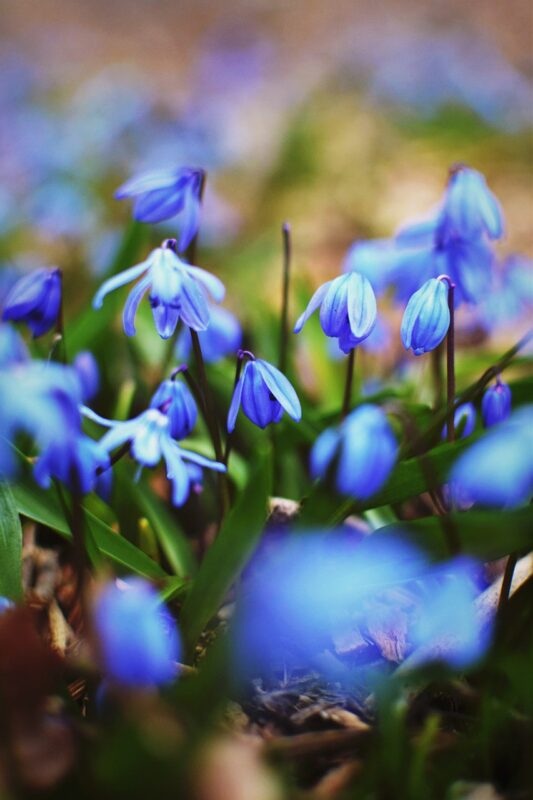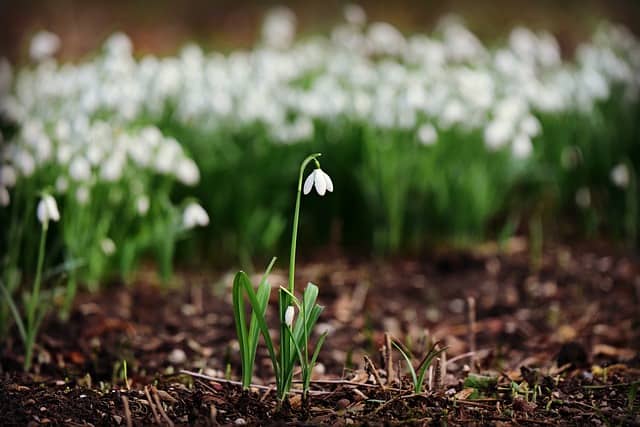As summer fades and the cooler months approach, gardeners in USDA Hardiness Zone 6 start to think about their fall planting strategy. This is a crucial time to enhance the beauty of your garden with bulbs that will burst into life during the spring. Fall is an ideal season for planting bulbs, as it gives them time to establish roots before the frost arrives.
In this in-depth guide, we’ll explore the best bulbs to plant in fall for Zone 6, including planting tips, care instructions, and information on when you can expect them to bloom.
Understanding Fall Planting in Zone 6

Before diving into specific bulb types, it is essential to understand what Zone 6 offers and why it’s an advantageous time for planting. Zone 6 experiences cold winters, with temperatures typically ranging between 0°F to 10°F. The growing season usually extends from mid-April to late October, allowing sufficient time for fall plantings to take root. The soil in this zone is often moist in the fall, making it easier for bulbs to establish their root systems.
Top Bulbs to Plant in Fall for Zone 6
Tulips

Overview: Tulips are among the most popular spring-flowering bulbs. Their diverse range of colors, shapes, and sizes makes them highly sought after by gardeners wanting to add lively splashes of color to their landscapes.
Varieties: There are numerous tulip varieties, including Darwin hybrids, Triumph tulips, and fringed tulips. In Zone 6, opt for varieties that are known to perform well with the winter chilling, such as ‘Queen of Night’ (deep purple) or ‘Sunrise’ (a delightful mix of yellow and orange).
Planting Tips:
Plant tulip bulbs 6-8 inches deep, pointed end facing up.
Space them 4-6 inches apart to avoid overcrowding.
Choose a site with full sun to partial shade and well-drained soil.
Care Instructions: After planting, water the bulbs thoroughly to settle the soil. Mulch can help retain moisture and prevent weeds. Once tulips bloom in spring, deadhead spent flowers to encourage energy to go back to the roots.
Daffodils

Overview: Daffodils, or Narcissus, are cherished for their bright yellow, white, and orange blooms. They are hardy and famously deer-resistant, making them a favorite for gardeners in Zone 6.
Varieties: Consider classic varieties like ‘King Alfred’ and the smaller ‘Tete-a-Tete’ for a charming touch. Daffodils are reliable perennials and can naturalize, meaning they will return year after year.
Planting Tips:
Daffodil bulbs should be planted about 6 inches deep, with the pointed end facing up.
Space them 6-12 inches apart to allow for their growth and spread.
They thrive in full sun and can also tolerate partial shade.
Care Instructions: Daffodils appreciate a regular water supply but avoid overwatering. After blooming, let the foliage die back naturally to help store energy for next year’s blooms. Fertilizing with a low-nitrogen fertilizer in the fall can also support their growth.
Crocuses

Overview: One of the earliest spring bloomers, crocuses signal the end of winter with their colorful appearances. They add cheerful hues to gardens as they push up through late winter snow.
Varieties: Popular crocus varieties include ‘Spring Beauty’ (purple), ‘Golden Yellow’, and ‘Pickwick’ (striped). Crocuses tend to create naturalized patches that enhance any landscape.
Planting Tips:
Plant crocus bulbs 3-4 inches deep.
Group them in clusters of 10 or more for a striking visual effect.
They prefer well-drained soil and sunny spots.
Care Instructions: Crocuses require minimal care once established. Water them during dry spells, particularly in spring. After flowering, allow the leaves to die back to provide nutrients back to the bulb.
Hyacinths

Overview: Hyacinths (Hyacinthus orientalis) are known for their dense flower clusters and sweet fragrance. They’re excellent for planting in fall due to their ability to thrive in cooler temperatures.
Varieties: Consider varieties like ‘Blue Jacket’ (blue), ‘Carnegie’ (white), and ‘Pink Pearl’ (pink). Each variety offers a unique color and scent profile that can brighten any garden.
Planting Tips:
Hyacinth bulbs should be planted 6-8 inches deep, with the pointed side up.
Space them 4-6 inches apart to allow for air circulation.
They prefer well-drained, loamy soil and full sun.
Care Instructions: Hyacinths require moderate water; ensure the soil does not remain soggy to avoid rot. After blooming, deadhead the flowers but leave the foliage until it has yellowed. This allows the bulb to store energy for the next growing season.
Alliums

Overview: Alliums are prized for their unique architectural shape and tall flower heads. They can tower over other flowers with their spherical blooms and create a striking focal point in the garden.
Varieties: For Zone 6, varieties such as ‘Globemaster’ and ‘Purple Sensation’ are excellent choices. Their robust nature and impressive heights can create a bold statement.
Planting Tips:
Plant allium bulbs 6-8 inches deep.
Space at least 12 inches apart to allow their size and shape to shine.
They thrive in sunny spots with well-drained soil.
Care Instructions: Alliums are low-maintenance bulbs. Once they’ve flowered, allow the foliage to die back naturally. Alliums are also drought-tolerant, making them resilient in varying weather conditions.
Siberian Squill

Overview: Siberian Squill (Scilla siberica) is a lesser-known but charming bulb that produces delicate blue flowers. It is an excellent naturalizer that can cover the ground in a cool carpet of color.
Varieties: The standard blue variety is the most popular, but you can also find white and pink versions for added variety.
Planting Tips:
Plant the bulbs 3-4 inches deep, pointed end up.
Space them 3-4 inches apart for natural spreading.
They thrive in both sunny and partially shaded areas.
Care Instructions: Siberian Squill requires little maintenance; they are drought-tolerant once established. Water them during dry spells, but otherwise, let nature do its work. After blooming, leave the leaves intact until they yellow to aid in bulb nourishment.
Snowdrops

Overview: Snowdrops (Galanthus nivalis) are heralds of spring, often blooming even before the snow has melted. Their pure white flowers look stunning peeking through the winter landscape.
Varieties: While the common Snowdrop is highly appreciated, various cultivars exist, with some showcasing double flowers or different shades of green.
Planting Tips:
Plant Snowdrop bulbs about 3 inches deep.
Space them 3-6 inches apart.
They prefer well-drained soil with partial to full shade.
Care Instructions: Snowdrops are low-maintenance but should be watered in extended dry periods. Their foliage should not be cut back until it has completely yellowed for optimal bulb health.
Dutch Iris

Overview: Dutch irises are elegant bulbs that produce alluring flowers in shades of blue, purple, yellow, and white. They add a touch of sophistication to any spring garden.
Varieties: Choose from a variety of colors, with ‘Blue Magic’ and ‘Caring Touch’ among the most popular for their strong stems and captivating colors.
Planting Tips:
Plant Dutch iris bulbs 4-6 inches deep.
Space them about 4-6 inches apart for optimal growth.
They prefer full sun and well-drained, fertile soil.
Care Instructions: Dutch iris bulbs need regular watering during dry spells in early spring. They can benefit from a balanced fertilizer to promote healthy growth. After flowering, allow the foliage to wither before cutting it back.
Planting and Care Techniques for Fall Bulbs in Zone 6
Timing is Everything
The best time to plant bulbs in Zone 6 is approximately 6-8 weeks before the first expected frost date. Typically, this falls between late September to early November, depending on your specific area. For best results, monitor local temperature trends and be prepared to plant when conditions are right.
Preparing the Soil
Good soil preparation is vital for the success of your bulbs. Consider the following steps:
Soil Testing: Testing your soil can help determine its pH and nutrient levels. Most bulbs prefer soil that is slightly acidic to neutral (pH 6-7).
Improving Drainage: If your soil tends to retain water, improve its drainage by adding organic matter such as compost or peat moss. This helps prevent bulb rot during winter.
Clearing the Area: Before planting, remove weeds, rocks, and debris from your planting area. This ensures that bulbs have adequate space to grow and reduces competition.
Planting Your Bulbs
When planting, follow these steps for optimal results:
Digging Holes: Use a trowel or bulb planter to dig holes of the appropriate depth, making sure the soil is loose and well-aerated.
Orientation: Always plant bulbs with the pointed end facing upward. If unsure, remember that the bulb’s roots will grow out of the flatter end.
Backfilling and Watering: After placing the bulbs in their holes, cover them with soil and gently tamp it down. Water thoroughly to help settle the soil and remove any air pockets.
Mulching and Winter Protection
A layer of mulch applied after planting can provide insulation and moisture retention for your bulbs. Mulch also helps suppress weeds that might compete with your bulbs for nutrients and water. As the weather becomes colder, consider adding additional mulch or frost cloth to protect tender bulbs from extreme cold and frost heave.
Monitoring and Caring for Spring Blooms
After the bulbs have been planted, the care continues as spring approaches:
Watering: Keep an eye on rainfall and water if necessary, especially during dry spells in late winter and early spring when your bulbs are trying to emerge.
Feeding: A slow-release, balanced fertilizer applied in early spring can boost growth and blooming.
Deadheading: After flowering, deadhead spent blooms to encourage the plant to focus energy on bulb health instead of seed production.
Allow Foliage to Die Back: It’s essential to let the leaves wither naturally. This process helps the bulb store energy for the next blooming season.
Conclusion
Planting bulbs in fall in Zone 6 is an investment in future beauty and vitality for your garden. Whether you choose the vibrant colors of tulips, the reliable nature of daffodils, or the fragrant allure of hyacinths, there’s a bulb variety that can enhance your landscape. With careful planning, preparation, and maintenance, you are set for a spectacular spring display that not only pleases your senses but also brings joy to your gardening heart. As you gather your tools and bulbs this fall, remember that each planting is a promise of color and life in the months ahead.





